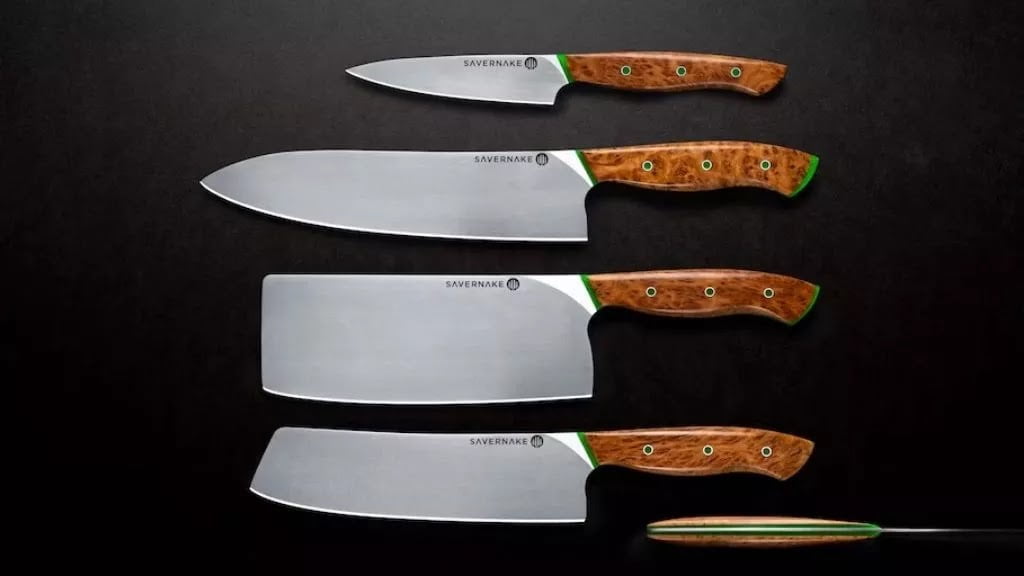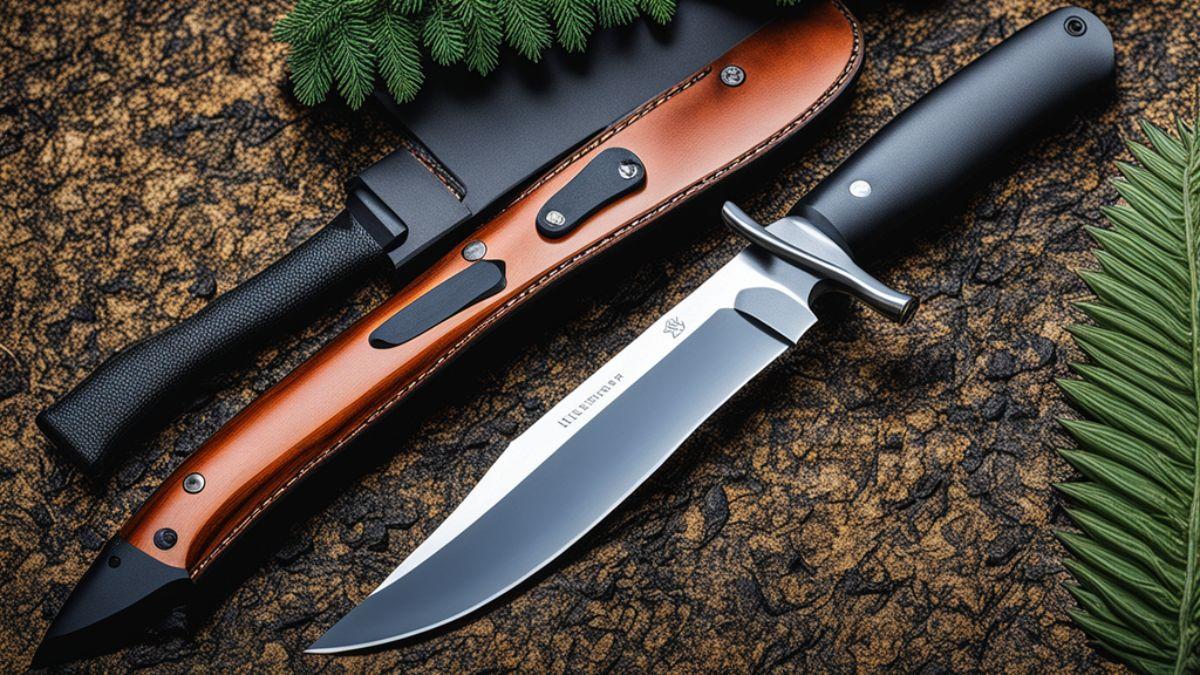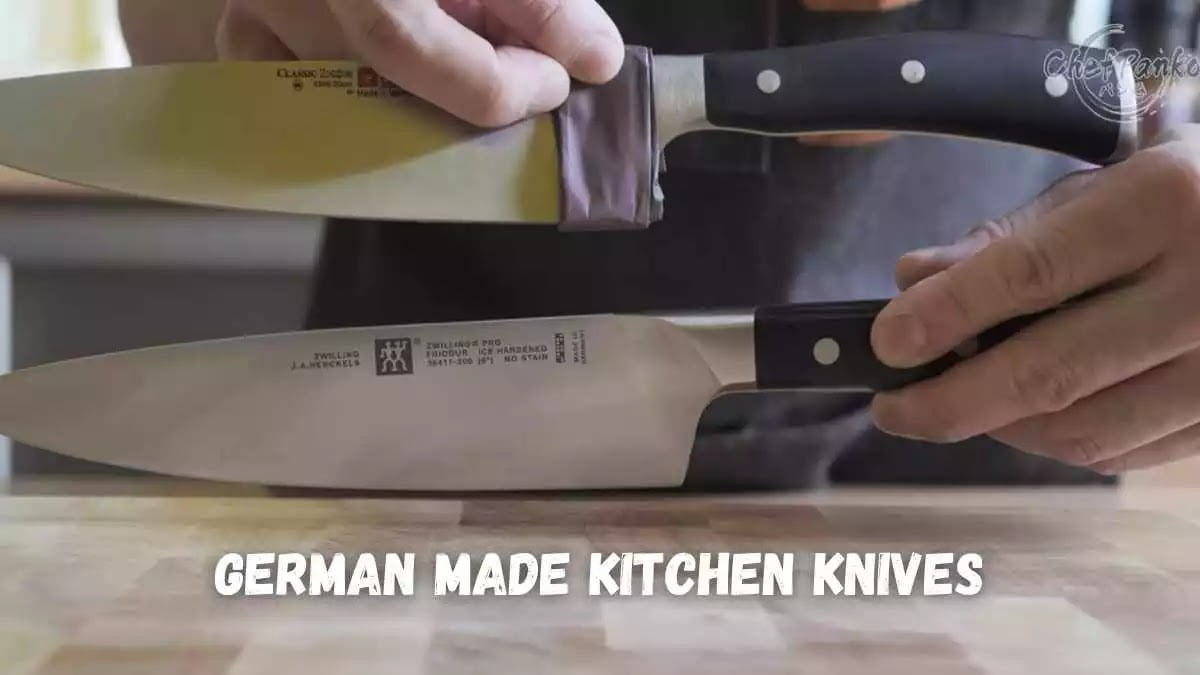
We may earn money or products from the companies mentioned in this post.
So you’ve decided you want to get serious about cooking at home and making delicious meals from scratch. That’s great—home cooking is rewarding and healthier. But to really make progress, you need the right tools. And one of the most important tools in any kitchen is a good chef’s knife. But with so many options out there, how do you choose? The most important thing is finding a knife that suits your needs and skills. For most home cooks doing some light chopping of veggies and herbs, a knife in the 6 to 8-inch range is ideal.
What Size Knife Is Best for Chopping Vegetables?
The size of the knife you choose for chopping veggies can make a big difference in how efficient and enjoyable the task is. For most home cooks, a chef’s knife around 8 to 10 inches long is ideal.
A knife this size provides enough blade to swiftly chop through vegetables of various shapes and sizes, without being too unwieldy for the average hand. Look for a high-quality, stainless steel knife that maintains an edge well and feels balanced and comfortable in your grip.
For larger veggies like cabbage, squash, and root vegetables, a longer blade, up to 12 inches, can make slicing and dicing quicker work. However, a shorter blade, around 6 to 8 inches, works great for smaller items like shallots, garlic, and herbs.
In the end, choose a knife size based on the types of ingredients you chop most often. If you frequently cook for a crowd or prep large amounts of food at once, a larger knife will minimize the time spent at the cutting board. For light meal prep or cooking for one or two, a smaller knife should work perfectly.
No matter the size, always keep your knife sharp for the best results. A sharp knife not only cuts more efficiently but also helps ensure uniform pieces and minimizes wasted produce. For safety, learn proper cutting techniques and always slice with care, especially when fatigue sets in. Keeping a cut-resistant glove on your non-dominant hand is also a good idea.
By selecting a high-quality chef’s knife in a size suited to your needs and skills, you’ll find that chopping fresh vegetables goes from a tedious chore to an enjoyable pastime. Your knives and cutting board will become your trusted companions in the kitchen as you prepare healthy, homemade meals.
Why Knife Size Matters for Vegetable Chopping
When it comes to chopping vegetables, size really does matter—at least when it comes to your knife. Using a knife that’s properly suited for the job will make prep work quicker, safer, and more enjoyable.
For most standard veggies like carrots, cucumbers, and zucchini, a chef’s knife around 8 inches long is ideal. This versatile blade is large enough to swiftly chop through dense produce, yet still compact enough for precise cuts. Look for a knife that’s stamped or forged and has a full tang for the best balance and durability.
For smaller tasks like mincing garlic and shallots or slicing scallions, a paring knife around 3 to 4 inches will give you more control and accuracy. A serrated knife in the 6 to 8-inch range works well for tomatoes, as the scalloped edge cuts through the skin without squishing the flesh.
When dealing with larger veggies such as eggplant, squash, and rutabagas, you’ll want an even bigger knife, like a Chinese cleaver or santoku, around 7 to 10 inches long. These blades provide the heft needed to chop through thick, dense produce. A slicing knife, which has a long, narrow blade, is designed specifically for cutting vegetables like cucumbers into thin, even slices.
In the end, having a range of knife sizes on hand will make prepping any vegetable a breeze. And with practice, you’ll be chopping like a pro in no time—fingers intact! Keeping your knives sharp, using a cutting board, and taking it slow until you get the hang of it are some of the keys to mastering this essential cooking skill.
Pros and Cons of a Large Chef’s Knife
A large chef’s knife, like an 8-inch blade, is a versatile tool that can handle most vegetable chopping tasks. However, its size does come with some drawbacks to consider.
Pros
A larger knife allows you to chop more efficiently since you can cut larger pieces with each stroke. Its weight and sharpness also make it easier to slice through tough vegetable skins and stems. A chef’s knife is designed to rock chop, so you can mince herbs and dice onions and peppers quickly. It’s really the only knife you need for most recipes.
Cons
The biggest downside is that a large knife can be more dangerous to handle, especially if you’re new to cooking. The longer, heavier blade requires more control and precision. It may feel unwieldy for people with smaller hands. You’ll also need to take extra care when washing and storing a bigger knife to avoid cuts.
A large knife isn’t ideal for every task, either. It won’t give you the precision of a paring knife for peeling and coring smaller produce. You’ll struggle to slice cherry tomatoes or julienne carrots with an 8-inch blade. For these types of jobs, a smaller knife is safer and more effective.
The Verdict
If you want an all-purpose knife that can chop mounds of veggies in no time, a chef’s knife is hard to beat. However, for safety and specific tasks, it’s good to have a set that includes a paring knife and a serrated knife as well. Start with a 6 to 8-inch chef’s knife and add the other knives as needed for your skills and recipes. With practice, a large knife can become an extension of your hand, but always put safety first until you build up your knife skills. Using the proper knife for each chopping job will make your time in the kitchen more enjoyable and efficient.
Pros and Cons of a Small Paring Knife
A small paring knife, around 3 to 4 inches in length, can be great for precision tasks like peeling, trimming, and slicing small fruits and vegetables. However, its diminutive size does come with some downsides when chopping larger quantities.
Pros
As the name suggests, a paring knife excels at paring—peeling, coring, and slicing. Its compact size gives you more control and dexterity for handling smaller foods. A paring knife can maneuver into tight spaces and follow the contours of produce. It’s ideal for slicing mushrooms, strawberries, kiwi, and other petite produce.
A paring knife is also very versatile. In addition to chopping, it can be used for mincing garlic and herbs, hulling strawberries, pitting cherries, and cutting cheese. For light-duty chopping of a handful of veggies, a paring knife gets the job done while saving space in your knife block.
Cons
When chopping a large volume of dense vegetables like carrots, potatoes, and squash, a paring knife’s small size becomes a hindrance. It requires more time and effort to chop the same amount of produce that a larger knife could handle with ease. Your hand is more prone to fatigue after prolonged use.
A paring knife’s short blade also limits the size of cuts you can make. It struggles to produce evenly sized cubes or slices of many vegetables. Without a pointed tip, a paring knife has difficulty piercing tough-skinned produce to get started chopping.
For most home cooks, a paring knife should not be your only knife. While handy for small tasks, it lacks the size and power needed for efficient vegetable chopping and heavy-duty cutting jobs. For the widest range of food prep, a chef’s knife or santoku paired with a paring knife is a perfect combination.
In the end, the pros of precision and control outweigh the cons of limited capacity when using a paring knife for light vegetable chopping. But when you need to chop with speed and volume, reach for a larger knife better suited to the job.
The Forgotten Middle Child: The Utility Knife
The utility knife is the underappreciated workhorse of any kitchen. While chef’s knives and paring knives get all the glory, the utility knife handles many of the mundane but essential tasks, like slicing vegetables. This middle child of the knife world deserves more credit.
Size Matters
For chopping most vegetables, a utility knife with a blade between 5 to 8 inches is ideal. Any shorter and you’ll be working double time chopping larger veggies like bell peppers, carrots, and cucumbers. Longer than 8 inches and the knife can be awkward to control for precise cuts. Aim for a knife in the 6 to 7 inch range for most home cooks.
Look for a knife with a blade that’s slightly curved (‘bellied’) to make slicing easier. A pointed tip also helps when chopping triangular vegetables like onions. While utility knives are designed to be general all-purpose knives, for chopping vegetables, a knife on the lighter side with a blade not too thick is best.
Technique Tips
When preparing vegetables, make sure to use a proper cutting board, preferably wood or plastic. Hold the knife handle firmly but not too tightly, using your fingers to guide the blade. Curl your fingertips under for safety and stability. Use a rocking motion for most chopping, raising, and lowering the blade in a smooth, continuous curve. For dicing, make slices in one direction, then change direction for a crosshatch cut.
Some other useful techniques include:
- Mincing: Rocking the blade rapidly over herbs or garlic to get very fine pieces.
- Chiffonade: Stacked basil or mint leaves, then rolled tightly and sliced into thin strips.
- Brunoise: Precise cube cuts, usually for onions, carrots, and celery. Cut into slices, then strips, then cubes.
- Diagonal or bias cuts: angled slices, good for chopping leafy greens.
With some practice, the utility knife can become an extension of your hand for swift and precise vegetable prep. This unassuming but essential tool deserves a place of honor in any kitchen. Treat it well, and it will serve you for years to come.
How Sharpened Blades Affect Knife Performance
A sharp knife is a safe knife. Dull blades require more force and can easily slip, increasing the chance of injury. For chopping vegetables, a properly sharpened knife will make the task quicker, safer, and more enjoyable.
Sharpening Stones
The best way to sharpen a knife is with a whetstone. Whetstones come in different grits – lower grits (around 220-400) are good for repairing damage and shaping the edge, while higher grits (around 800 and above) are better for honing and polishing. To sharpen a stone, lubricate the stone with oil and hold the knife at a 15-degree angle, sliding the blade along the stone using even pressure. Start with the coarser grit, then move to progressively finer grits.
Electric Sharpeners
Electric sharpeners can quickly sharpen knives but may remove more metal from the blade. Look for a sharpener that allows you to control the angle and has multiple stages from coarse to fine. Pull the knife through slowly and evenly. Electric sharpeners can shorten the lifespan of a knife, so should only be used occasionally.
Honing Rods
A honing rod, like sharpening steel, helps realign and straighten the edge of a knife. It does not actually sharpen the blade, so should be used in between sharpening. Before using, check that the rod is securely fastened to a countertop or board. Hold the knife at a 20-degree angle and slide one side of the blade along the rod using even pressure, then flip and repeat on the other side. Do this 10-15 times on both sides of the blade.
A sharpened knife will glide easily through vegetables without crushing them. After chopping, wipe the blade clean and dry to prevent dulling. With regular maintenance, a high-quality chef’s knife can last a lifetime. Keeping your knives sharp and honed will make cooking safer, easier, and much more pleasurable.
Knife Handles: What’s Most Comfortable?
When it comes to knife handles, comfort is key. After all, if a knife doesn’t feel good in your hands, you won’t want to use it. The material and shape of a knife handle can make a big difference in how pleasant and easy it is to chop vegetables.
Wood and plastic are two of the most common handle materials. Wood handles, like beech or oak, tend to be lightweight yet durable. They provide a classic look but require more maintenance to keep clean. Plastic or polypropylene handles are impervious to water and bacteria and require no maintenance. However, some cooks feel they lack the charm of wood.
Some handles have an ergonomic shape to fit comfortably in your hand. A rounded handle with a slight indent for your fingers can make cutting feel more natural. Some handles have strategically placed finger grips or a bolster (the thick part where the blade meets the handle) to provide leverage and control. If possible, try holding different handles to determine what feels most balanced and secure for you.
The ideal handle size depends on the size of your hands and personal preference. A handle that’s too large can feel clumsy, while one that’s too small may cramp your hand. For most cooks, a handle between 4 to 6 inches long and 1 to 1.5 inches in diameter works well for chopping vegetables. However, if you have very large or very small hands, you may want to size up or down.
When chopping, you want a handle that allows you to hold the knife comfortably and securely. One with an ergonomic shape, balanced size, and material you like the feel of. Trying different options to determine your favorite is the best way to find a handle that suits you perfectly. The right handle can make the difference between chopping as a chore or as an enjoyable part of cooking.
Additional Knife Features to Consider
When choosing a knife for chopping veggies, don’t forget about some key features beyond just the blade size. The right extras can make prepping produce quicker and easier.
Handle Material
Look for a knife with a handle that fits comfortably in your hand. Common options include wood, plastic, metal, and synthetic composites. Wood and plastic tend to provide more grip, while metal and composite handles are more durable. Choose what feels best for you.
Bolster
The bolster is the thick metal piece between the handle and the blade. A full bolster provides durability and balance but can make sharpening tricky. A half or partial bolster is a good compromise. Avoid knives with no bolster, as they may feel unbalanced or the handle may break off over time.
Tang
The tang refers to the extension of the blade into the handle. A full tang extends the full length of the handle and is the most durable option. A partial tang still provides stability but at a lower cost. Avoid knives with no tang or a “rat tail” tang, as the blade may become loose or break off.
Blade Shape
For chopping, a curved blade shape works well, such as a chef’s knife or santoku. A curved belly provides plenty of surface area to scoop up cut pieces. A sheep’s foot or bird’s beak blade also works great for dicing. In general, avoid highly pointed blades which can be more difficult to use safely.
Blade Finish
A smooth blade finish helps ingredients slide off more easily while chopping. Polished or satin finishes are good options. Avoid serrated blades or rough, matte finishes which can stick to foods.
With the right combination of size, handle, bolster, tang, shape, and finish, you’ll have a knife that makes chopping a joy rather than a chore. Look for options that match your needs and you’ll be slicing and dicing in no time.
Conclusion
In the end, you need to choose a knife that feels comfortable and capable in your hands. Don’t get distracted by flashy designs or the latest trends, focus on a tool that helps you achieve your goals. For most home cooks chopping vegetables, an 8-inch chef’s knife is the perfect place to start. It’s versatile enough for nearly any task, durable and affordable. If you have smaller hands or prefer lighter knives, consider a 6 or 7-inch blade. Larger knives, while impressive, often require more skill and can be tiring to use for long periods. Keep your knife sharp, learn proper technique, and your vegetable chopping experience will be efficient, enjoyable, and safe. Cooking at home should be an act of love, so choose a knife that inspires your creativity in the kitchen!






